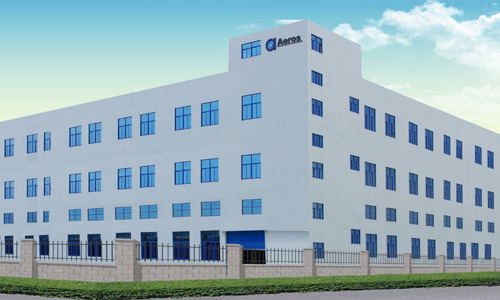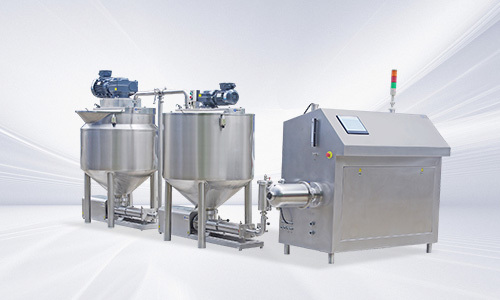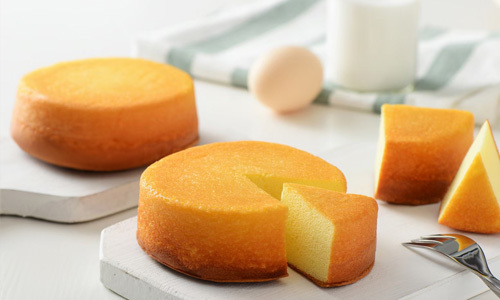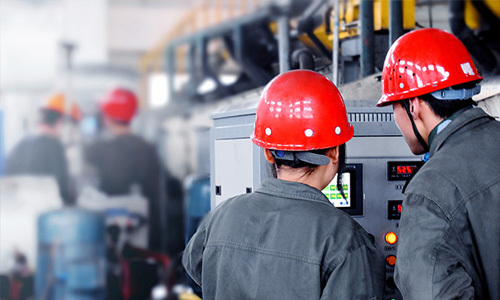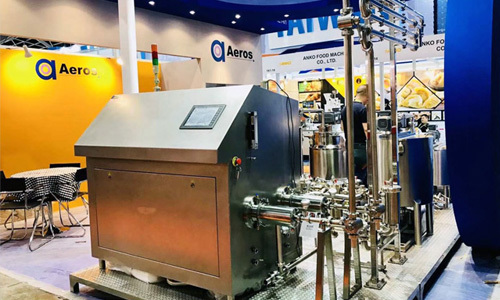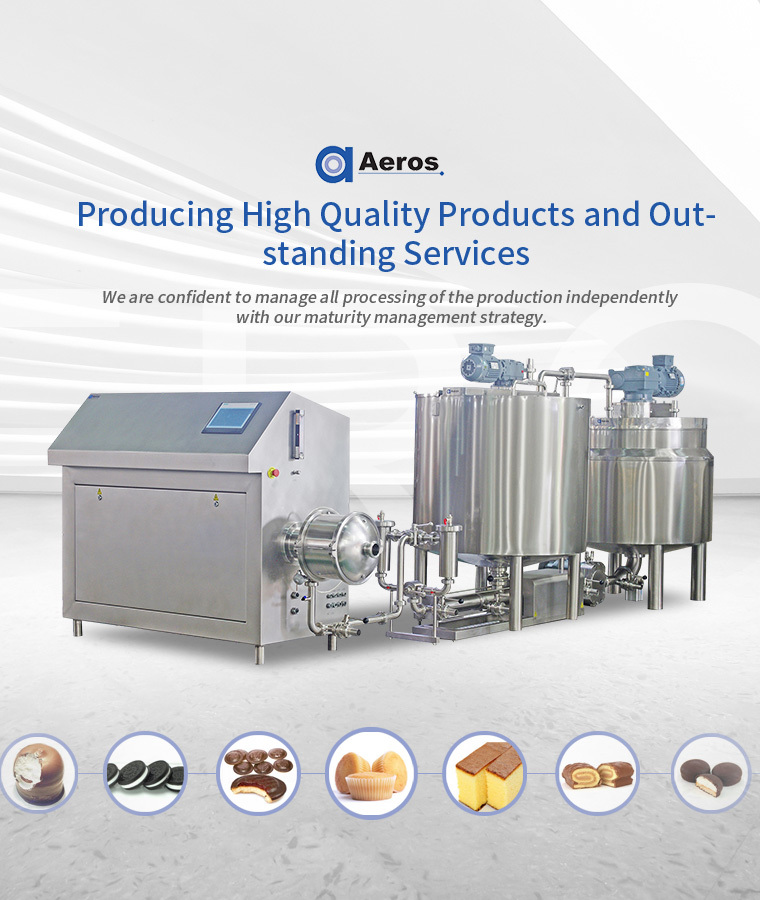Exploring the Benefits of Using an Aerated Chocolate Production Line for Enhanced Efficiency and Quality

2024/12/28
Exploring the Benefits of Using an Aerated Chocolate Production Line
Table of Contents
- 1. Introduction to Aerated Chocolate Production
- 2. What is Aeration in Chocolate?
- 3. Importance of Aerated Chocolate in the Confectionery Industry
- 4. Benefits of Using an Aerated Chocolate Production Line
- 4.1 Enhanced Texture and Creaminess
- 4.2 Improved Taste and Flavor Release
- 4.3 Increased Production Efficiency
- 4.4 Cost-Effective Production
- 4.5 Sustainability in Chocolate Production
- 5. Components of an Aerated Chocolate Production Line
- 6. Setting Up an Aerated Chocolate Production Line
- 7. Common Challenges in Aerated Chocolate Production
- 8. Future Trends in Aerated Chocolate Production Technology
- 9. FAQs about Aerated Chocolate Production
- 10. Conclusion
1. Introduction to Aerated Chocolate Production
In the ever-evolving world of confectionery, **aerated chocolate** stands out as a unique product that entices consumers with its light, fluffy texture and rich flavor. The process of aeration, which involves incorporating air into the chocolate mixture, significantly enhances the sensory experience for consumers. As the demand for high-quality chocolate continues to rise, manufacturers are increasingly turning to specialized equipment such as the **aerated chocolate production line** to streamline their production processes while maintaining or improving product quality.
2. What is Aeration in Chocolate?
Aeration in chocolate refers to the process of introducing air into the chocolate mixture during production. This method creates a lighter, more porous structure that not only alters the texture but also influences the flavor profile. The aeration process can be achieved through various techniques, such as whipping, beating, or using specialized machinery designed to inject air into the chocolate mass. The result is a product that melts in the mouth and provides an enhanced chocolate experience.
3. Importance of Aerated Chocolate in the Confectionery Industry
Aerated chocolate is increasingly becoming popular in the confectionery industry for several reasons. First and foremost, it caters to consumer preferences for lighter and more indulgent treats. Additionally, the unique texture and flavor enhancements that aeration brings make it an attractive option for manufacturers looking to differentiate their products in a competitive market. As a result, **the importance of aerated chocolate** extends beyond mere aesthetics to encompass factors such as consumer satisfaction, product innovation, and market competitiveness.
4. Benefits of Using an Aerated Chocolate Production Line
The implementation of an aerated chocolate production line can yield numerous benefits for manufacturers. Below, we explore the key advantages.
4.1 Enhanced Texture and Creaminess
One of the most immediate benefits of using an aerated chocolate production line is the **enhanced texture** of the final product. The incorporation of air during production results in a creamier, more delightful mouthfeel that is hard to replicate using traditional methods. This textural improvement not only elevates the sensory experience but also sets the product apart in terms of quality.
4.2 Improved Taste and Flavor Release
Aeration significantly influences the **taste profile** of chocolate. The introduction of air helps to release the flavor compounds more effectively, resulting in a more pronounced chocolate taste. Consumers often describe aerated chocolate as having a richer flavor due to this improved flavor release, making it a sought-after option in the market.
4.3 Increased Production Efficiency
Using an aerated chocolate production line can lead to **increased production efficiency**. Automation and specialized machinery allow for faster processing times, minimizing the labor involved in traditional chocolate-making methods. This efficiency translates into higher output levels while maintaining consistency in product quality.
4.4 Cost-Effective Production
Investing in an aerated chocolate production line can be **cost-effective** in the long run. By improving production efficiency and reducing labor costs, manufacturers can achieve better profit margins. Moreover, the ability to produce a high-quality product that commands a premium price in the market makes this investment even more worthwhile.
4.5 Sustainability in Chocolate Production
As consumers become more environmentally conscious, manufacturers are looking for ways to improve the sustainability of their processes. Aerated chocolate production lines can facilitate a more sustainable approach by optimizing ingredient usage and reducing waste. This aligns with the growing trend of sustainable packaging and ethically sourced ingredients, appealing to eco-conscious consumers.
5. Components of an Aerated Chocolate Production Line
An aerated chocolate production line is composed of several key components that work together to create high-quality aerated chocolate. These components include:
- **Mixing Unit**: This is the starting point where chocolate ingredients, including cocoa solids, sugar, and fat, are combined and melted to form a homogenous mixture.
- **Aeration Equipment**: Specialized machines or mixers that introduce air into the chocolate mixture, creating the desired texture and volume.
- **Cooling System**: After aeration, the chocolate needs to be cooled to set the structure and achieve the right consistency.
- **Molding and Packaging Equipment**: This machinery shapes the cooled chocolate into desired forms and prepares it for packaging.
Each component plays a vital role in ensuring a smooth, efficient production process while maintaining product quality.
6. Setting Up an Aerated Chocolate Production Line
Setting up an aerated chocolate production line involves careful planning and execution. Here are the key steps to consider:
1. **Assess Your Production Needs**: Determine the scale of production required and the types of products you plan to manufacture.
2. **Choose the Right Equipment**: Invest in high-quality, specialized machinery that meets your production requirements and adheres to industry standards.
3. **Design the Production Layout**: Create an efficient workflow that minimizes downtime and maximizes output, considering the layout of equipment and workstations.
4. **Train Your Staff**: Ensure that your team is adequately trained in operating the new equipment and understands the aeration process.
Following these steps will help establish a streamlined production line that enhances both efficiency and product quality.
7. Common Challenges in Aerated Chocolate Production
While the benefits of an aerated chocolate production line are significant, manufacturers may face challenges during implementation. Some common challenges include:
- **Consistency**: Achieving consistent aeration levels can be tricky and may require fine-tuning of equipment settings.
- **Ingredient Variability**: Fluctuations in ingredient quality can impact the final product, making it essential to source consistently high-quality ingredients.
- **Equipment Maintenance**: Regular maintenance is crucial to ensure that machinery operates effectively and to avoid production downtimes.
By addressing these challenges proactively, manufacturers can ensure a successful aerated chocolate production process.
8. Future Trends in Aerated Chocolate Production Technology
As technology continues to evolve, several trends are shaping the future of aerated chocolate production:
- **Advanced Automation**: Increased automation in the production process is expected to enhance efficiency and minimize human error.
- **Smart Manufacturing**: Integration of IoT devices will enable manufacturers to monitor production in real-time and optimize workflows.
- **Health-Conscious Options**: The demand for healthier chocolate options, including reduced sugar or added nutritional benefits, is likely to grow, prompting manufacturers to innovate further.
By staying ahead of these trends, manufacturers can remain competitive in the dynamic chocolate market.
9. FAQs about Aerated Chocolate Production
What is aerated chocolate?
Aerated chocolate is chocolate that has air incorporated into it during the production process, resulting in a lighter, fluffier texture.
How does aeration affect chocolate flavor?
Aeration enhances the release of flavor compounds in chocolate, providing a richer and more pronounced taste experience.
What equipment is necessary for aerated chocolate production?
Essential equipment includes mixing units, aeration machines, cooling systems, and molding and packaging equipment.
Is aerated chocolate healthier than regular chocolate?
While aerated chocolate may have a lighter texture, its health benefits depend on the ingredients used and portion sizes, similar to regular chocolate.
What challenges can arise during aerated chocolate production?
Challenges include achieving consistent aeration, variability in ingredient quality, and the need for regular equipment maintenance.
10. Conclusion
The implementation of an aerated chocolate production line offers a multitude of benefits for manufacturers looking to enhance their product offerings. From improved texture and flavor to increased efficiency and sustainability, aerated chocolate represents a significant advancement in confectionery production. By investing in the right equipment and adopting best practices, manufacturers can elevate their production processes and cater to the evolving preferences of consumers. As the industry continues to innovate, the future of aerated chocolate production is poised for exciting developments that promise to enrich the chocolate experience for all.
Aerated chocolate production line

